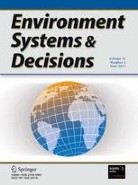Professor Jorge Agüero has published “The value of redistribution: Natural resources and the formation of human capital under weak institutions” in the Journal of Development Economics.
The paper is coauthored with Carlos Felipe Balcázar, Stanislao Maldonado and Hugo Ñopo.
Abstract: We exploit time and spatial variation generated by the commodities boom to measure the effect of natural resources on human capital formation in Peru, a country with low governance indicators. Combining test scores from over two million students and district-level administrative data of mining taxes redistributed to local governments, we find sizable effects on student learning from the redistribution. However, and consistent with recent political economy models, the relationship is non-monotonic. Based on these models, we identify improvements in school expenditure and infrastructure, together with increases in health outcomes of adults and children, as key mechanisms explaining the effect we find for redistribution. Policy implications for the avoidance of the natural resource curse are discussed.
The paper may be found online at:
https://www.sciencedirect.com/science/article/abs/pii/S0304387820301565
 Professor Oskar Harmon has been named a University Teaching Fellow by the Center for Excellence in Teaching and Learning:
Professor Oskar Harmon has been named a University Teaching Fellow by the Center for Excellence in Teaching and Learning:
 Professor Alexander Vaninsky, a long-time economics instructor at the Stamford Campus, recently published the article “Multiobjective restructuring aimed at green economic growth” in Environment Systems and Decisions (February 2021)
Professor Alexander Vaninsky, a long-time economics instructor at the Stamford Campus, recently published the article “Multiobjective restructuring aimed at green economic growth” in Environment Systems and Decisions (February 2021)